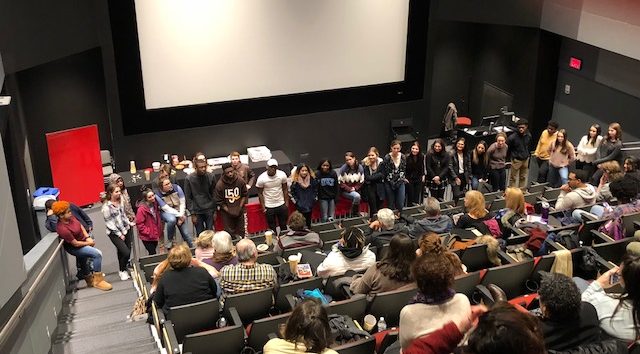Last week, I started shooting my interview with Tina Yerdon, a friend and a cancer survivor. I made a few mistakes which I was absolutely freaking out about. I had two cameras to get two shots: a close-up and wide shot of Tina. The close-up camera had the ISO set way too high, the White Balance at a terribly yellow setting, the f-stop at some wild number, and the shutter speed – I don’t know. I wasn’t thinking. It was a great interview but once I looked at my footage, this close-up shot was grainy. It is an interesting aesthetic that could work but also annoyingly grainy. I was stressed for the rest of the week but then spoke to one of my professors who told me these mistakes do tend to happen while filming and that this is the beauty of doc filmmaking. It’s not going to be perfect. The audio should be decent and it is what the interviewee is saying that is important. The audio of the interview is good and I think I will be okay. I can cover up most of the close-up shots with some good B-roll.
I initially had thoughts of re-interviewing my subject but I think it is extremely unethical. I asked her some deep personal questions and she cried. It was very sad and I don’t want to put her in that vulnerable position again. I think this will be a great challenge for me to test how well I will deal with this interview and still make it as good as I think it is.
It is difficult for me to meet with my interviewee often because she is barely on campus. She goes home for 4-5 days a week because of her doctors’ appointments. She managed to text me yesterday, telling me that she was available for a few hours. When I visited her at home, I could tell she was not having it. Tina was miserable and in a bad mood because she had a feeling that the doctor wouldn’t take off her stitches this week and she might have to have another surgery in December (her seventh surgery). Before I could think of pulling out my camera, I felt the urge to cheer her up. I decided that we get her out of her stuffy home and go for a walk. Tina grabbed her crutches and quietly started walking out of her home. As soon as she stepped out of her house, the color of her face changed. She was smiling, commenting on the smell of the freshly cut grass and the cool air hitting her face. She was so happy. I started filming her and she was responsive. I hope that my interview b-roll captures this excitement she had. The purpose of me writing about this is to say that we will develop intimate relationships with our interviewees and might be put in awkward situations when they’re in an off mood. I tensed up when I saw her sad.
I am also questioning my intent with this interview : what am I trying to show the audience? what is my goal? what am I trying to add to the table?
